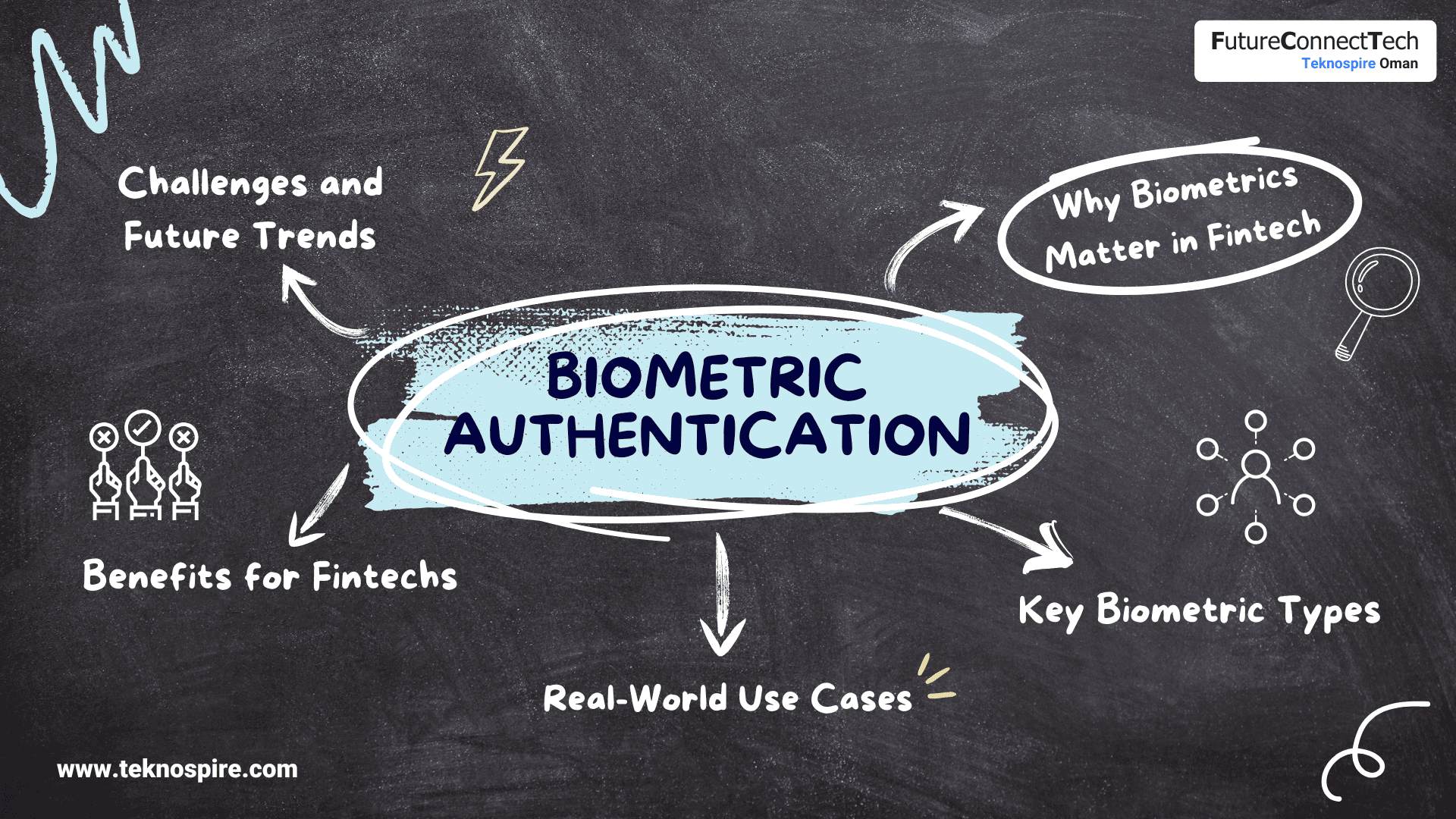In today’s fast-paced world, digital financial services are exploding from mobile banking to AI-powered investment platforms. But with convenience comes risk: fraud, data breaches, account takeovers. That’s where biometric authentication steps in granting access based on your unique physical traits, offering fintech a powerful line of defense.
Why Biometrics Matter in Fintech
- Identity is everything in finance. Passwords and PINs can be stolen or guessed. Biometrics like fingerprints, facial patterns, and voiceprints are personal and much harder to fake.
- Regulatory push: Governments and regulators worldwide are encouraging or mandating stronger authentication – e.g: PSD2 in Europe. Biometrics helps meet these requirements.
- User trust is a business strength. When users see their bank taking security seriously, adoption rises and so does the brand’s reputation.
Types of Biometric Technologies & How They Work
a. Fingerprint Scanning
Arguably the most common. Users touch or swipe their finger on a sensor; the system compares the print to stored encrypted data.
b. Facial Recognition
Leveraging front cameras or infrared sensors to map face geometry. More secure versions use “liveness detection” to prevent spoofing with photos.
c. Voice Recognition
Analyzes tone and pitch used for customer‑service phone lines or voice‑activated transactions.
d. Iris & Retina Scans
Highly accurate (pattern of eye), though less common due to cost and infrastructure needs. Found in high‑security banking apps or physical branches.
Real World Use Cases in Fintech
- Digital onboarding with facial or fingerprint verification for instant eKYC – e.g: Paytm
- Mobile banking apps using biometrics for secure login and transaction approvals.
- Cardless ATM access through fingerprint or iris scans.
- Voice authentication for phone banking and high-value transactions – e.g: HSBC.
- Biometric-enabled wearables and payment cards for contactless transactions – e.g: Smart Watch, Rings & Wrist Bands.
- Wallet apps and P2P payments secured with Face ID or fingerprint – e.g: Google Pay, Apple Pay, Phone Pay.
Benefits & Business Impact:
| Benefit | Impact |
| Enhanced security | Reduces fraud; biometric is nearly impossible to replicate. |
| Better user experience | No PINs/passwords, just a quick touch or glance. Fast & frictionless. |
| Regulatory compliance | Meets standards like PSD2, KYC/AML making onboarding smoother. |
| Competitive edge | Fintechs using biometrics appear innovative, trustworthy, modern. |
Challenges & Considerations:
- Privacy concerns: Biometric data is sensitive. Must be encrypted, stored locally on‑device.
- Spoofing risks: Low‑quality systems are fooled by photos or voice recordings; anti‑spoofing tech is essential.
- Equity issues: Some biometrics work poorly with darker skin tones, aging faces, or voice impairments at risk of exclusion.
- False positives/negatives: Systems must balance accuracy and convenience; backup fallbacks (like OTPs) are needed.
The Road Ahead: Trends & Outlook
- Multimodal biometrics: Combining face + voice or fingerprint to boost accuracy.
- Continuous authentication: Instead of one-time login, systems monitor behavior continuously – how you type, speak, even gesture.
- Edge AI: Biometric processing happening entirely on-device keeps personal data private while delivering instant results.
- Standards & interoperability: As global standards evolve, biometric logins could become universal across apps and borders.
Conclusion
Biometric authentication isn’t just a shiny innovation – it’s fast becoming a core infrastructure for secure, user-friendly fintech services. With carefully designed privacy, anti‑spoofing, and accessibility measures, it offers stronger security for companies, and smoother experiences for customers.
